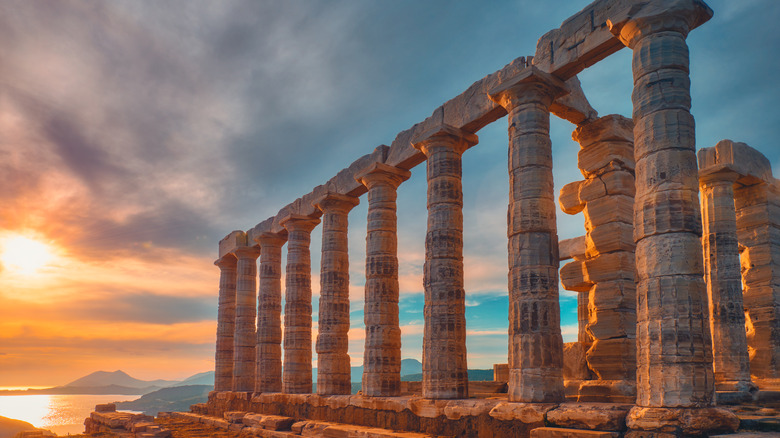The Last Meal Practice Goes Back To Ancient Greece
If you could only have one final meal, what would it be? For inmates on Death Row, whatever is chosen for their final course has to be within an approved set of parameters set by prison authorities. Depending on where they're locked up, that means nothing gourmet, no home cooking from a loved one, no alcohol, no tobacco, and no local pizza delivery (via My Law Questions). Sometimes a monetary cap is even placed on the cost of the meal. So if you ever find yourself in such an unfortunate situation, you may as well forget about a fancy steak dinner last meal and settle for regular prison food instead. However, the rules of a prisoner's last meal weren't always so strict.
John Wayne Gacy famously received KFC before his death, while others dined on more sophisticated menus of lobster tail and garlic bread (via CBS News). Some convicts refused a final meal altogether. Back when Texas swapped out its death penalty sentence from the gallows to the electric chair in 1924, the Lone Star State was one of the first states to offer last meals to prisoners waiting for capital punishment, per History Is Now Magazine. Although, in 2011, Texas had to throw in the towel. The state abolished last meals after one inmate ordered a laundry list of multiple elaborate, specially-made foods that he spitefully didn't take a single bite of.
Historically, the last meal tradition can be traced back to the ancient Greeks, and it actually stemmed from superstitious beliefs.
Greeks believed the last meal would let prisoners rest in peace
In response to Texas' decision to eliminate last meals for those on Death Row, a group of colleagues at Mercer University School of Law examined the history of the ritual. Their research in "Cold (Comfort?) Food: A Systematic Examination of the Rituals and Rights of the Last Meal" notes that it all started in Greece. Documentarian Mats Bigert explained to the researchers that this was specifically done "so that they could cross the River Styx into the underworld, and not come back as a hungry ghost." Because no one wants to be haunted by a ghost with the munchies.
The research paper goes on to explain that in Germany, it was called the "Hangman's Meal," where the accused would feast on a roasted goose with their accusers in search of a bit of last-ditch mercy. In 18th century London, the tradition was to head out for one last pub crawl with your buddies for a "great bowl of ale to drink at their pleasure, as their last refreshment in life."
Here in the U.S. where Christianity dominates as the largest religion, you might associate a last meal with the story of The Last Supper, found in the Bible. For medieval Europe, this "symbolizes a prisoner making peace with their executioners, breaking bread with them in the same way that Christ invited Judas Iscariot to the Last Supper." And if an inmate's final meal wasn't high quality, queue more hangry ghosts ready for haunting.

